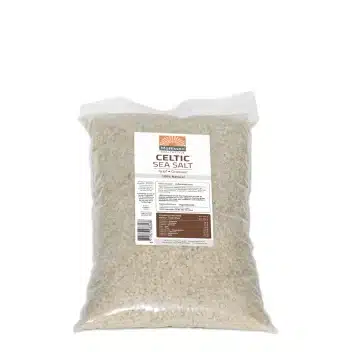Over the last so many months, we have been selling a rather large quantity of celtic sea salt. A lot of promotion of this salt, traditionally harvested on the Atlantic Coast of Brittany in France, comes from a social media personality, called Barbara O’Neill. You may or may not have heard of her. She is an advocat for natural health and has a rather large following.
I just wanted to share this to give you the background information of what encouraged me to write this post. I have no particular opinion about what Mrs. O’Neill publishes and encourage you to research and make your own decisions.
So let’s just look at the nutritional profiles and environments of the various salts and how we may best use them.
When comparing Celtic sea salt to Himalayan salt, their mineral profiles are slightly different due to their origins and composition:
Celtic Sea Salt:
Traditionally and over hundreds of years, this salt has been harvested from coastal regions in France known as SEL de Guerande.. It is known in particular for its grey color and moist texture. So moist that it needs to be stored in non paper packaging, particularly if you are living in a country with high humidity. The damp composition allows it to store well in our human cells as we are made predominantly of water. Our cells have apparently a better opportunity to avail of the abundance of minerals and trace minerals available.
Some of these minerals are magnesium, calcium, potassium, and iron which are vital for electrolyte balance, (keeping hydrated) bone health, and various metabolic functions. Its unique mineral composition gives it a distinct taste and makes it beneficial for maintaining and supporting overall health.
Himalayan Salt:
As the name gives away, this salt is mined from ancient sea beds in the Himalayan mountains, particularly Pakistan. This salt is easily recognised by its pink color, from the presence of iron oxide. It contains a similar mineral range to Celtic salt but also includes traces of iodine, zinc, and selenium. Himalayan salt made a name for its detoxifying properties. It is very popular in the kitchen for daily cooking and I am very certain that you have seen it used as salt lamps too.
Both salts are beneficial when used in moderation. They taste slightly different and I truly believe that it’s a good idea to simply switch them around. The strangest flavour in my opinion is the one of black salt. It really tastes very much like eggs and vegans in particular have often bought it for this exact reason.
Now let’s have a look at some slight concerns to keep in mind:
As for many foods from the sea, the content of toxins like lead, mercury, and aluminium should be kept in mind. When buying your salts, make sure you trust the seller and even approach the producer to find out what measures they have in place, to ensure the purity of their salt. This also applies to Himalayan salt.
While both salts are less processed than standard table salt and retain a more complex mineral profile, it’s important to note that they are both primarily sodium chloride, and excessive intake could lead to the same health risks associated with any high sodium diet, such as hypertension (high blood pressure)
I find this point very important, particularly with regards to some recommendations on the internet to take salt in water before every meal. Bear in mind, that you are probably using salt to season your food and also that most ready made foods and snacks also contain salt. As we should not consume more than 4 g per day, it is important to keep track of your intake.
Maybe this article will inspire you to conduct your own research. It is merely intended as guidelines and not to be seen as medical advice. If you are taking medication, always consult with your Gp or Health Care Professional prior to adding new medicines and some foods



Love this, so interesting!!
Thank you as a nurse it was helpful to expand my knowledge base on sodium.
Thank you as a nurse it was helpful to expand my knowledge base on sodium.
I appreciate the feedback Sara. Thank you.